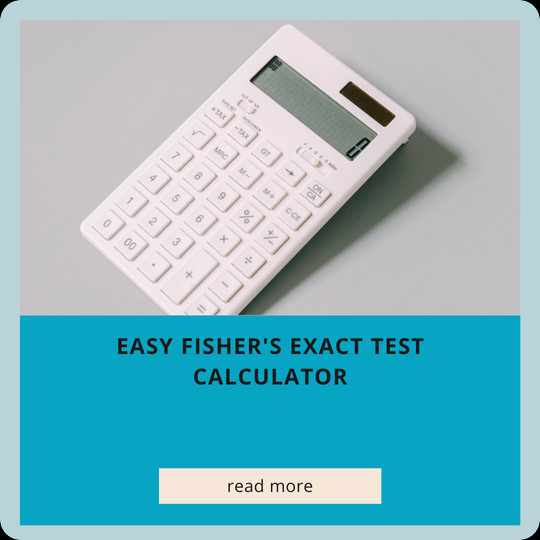Analyzing Relationships with Fisher's Exact Test - A 2x2 Contingency Table Calculator
Contingency tables provide a powerful way to analyze relationships between two categorical variables, dividing subjects into four distinct categories based on the outcomes of two factors, each with two possibilities. One common statistical test used with such tables is the Fisher's Exact Test, which helps determine if there is a significant association between these factors.
We have developed a user-friendly and visually appealing Fisher's Exact Test calculator specifically designed for 2x2 contingency tables. The table is organized to categorize subjects into two groups (Group 1 and Group 2) and two outcomes (Outcome 1 and Outcome 2). By simply inputting the counts into the respective cells of the table, you can perform the Fisher's Exact Test and obtain the associated p-value.
How to Use the Calculator:
- Labels and Subjects:
- Input labels for Group 1, Group 2, Outcome 1, and Outcome 2 to describe your study context.
- Provide the number of subjects observed in each category.
- Data Input:
- Enter the counts for each cell representing the observed occurrences of subjects in each category.
- Fisher's Exact Test:
- Choose the test type: two-tailed (both), one-tailed greater, or one-tailed less.
- Click the corresponding button to calculate the p-value using the Fisher's Exact Test.
Understanding the Results:
The calculated p-value from the Fisher's Exact Test holds immense significance, revealing the statistical significance of the observed distribution in the 2x2 contingency table. A low p-value is indicative of a substantial association between the factors at play, suggesting that the observed counts are not mere coincidences.
Our calculator streamlines the analytical process, providing an efficient tool for researchers, data analysts, and anyone seeking to unravel intriguing relationships between categorical variables. The ease and speed at which you can perform this analysis make it an indispensable asset in your analytical toolkit.
Harness the power of this calculator to analyze your own contingency tables, gaining valuable insights into the relationships between factors. Dive into your data and uncover meaningful associations with confidence!
